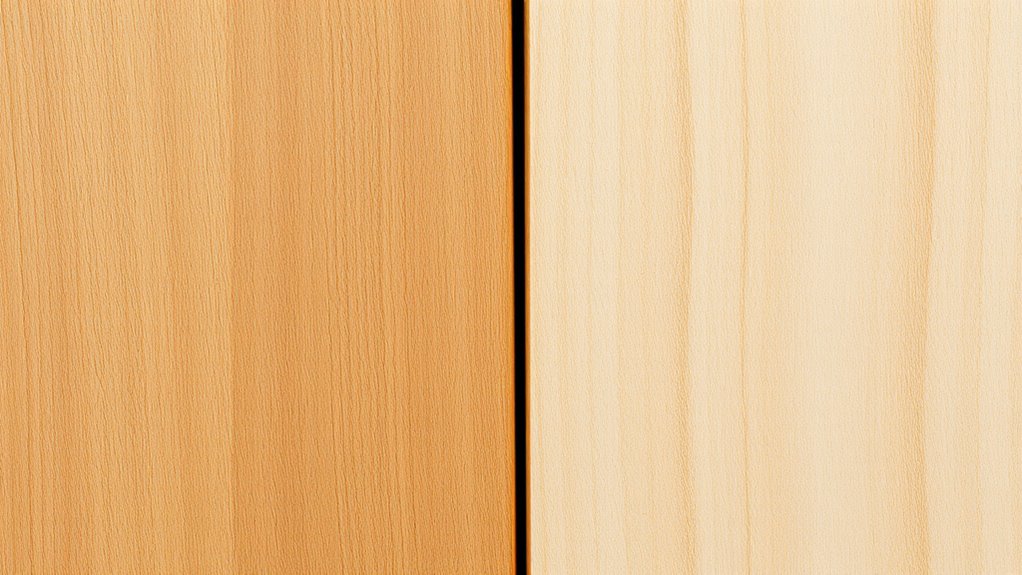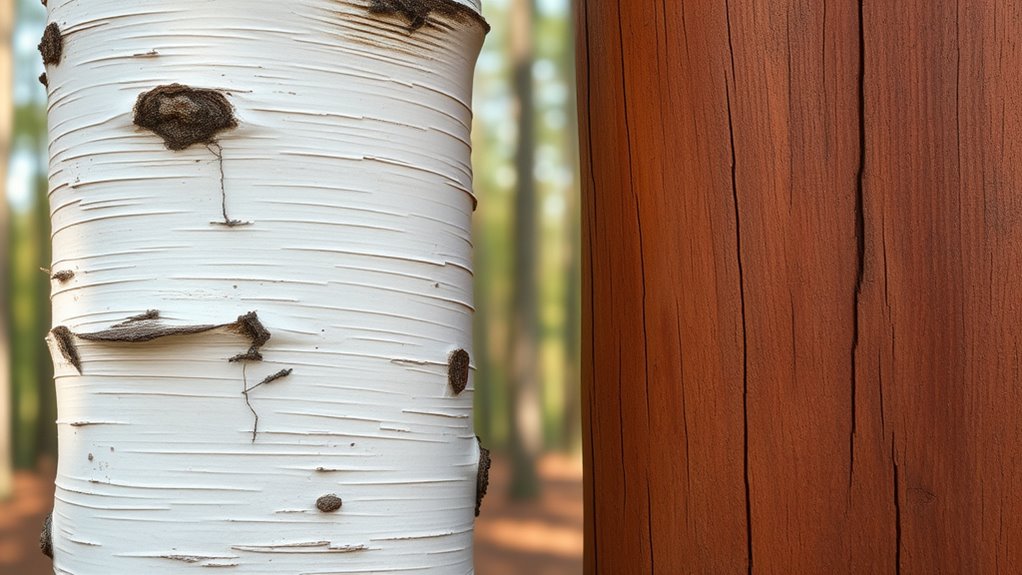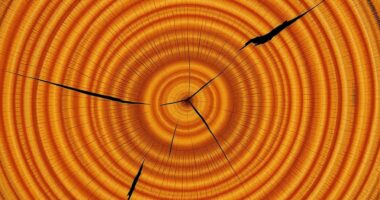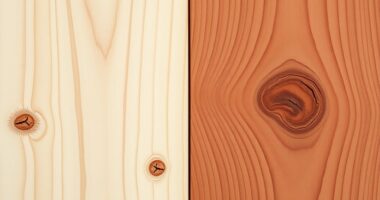Birch and beech differ in both color and texture. Birch generally has a light, natural hue with a smooth, fine-grain pattern that appears straight and uniform. Beech, on the other hand, features a slightly darker, more subtle tone with a denser, closer grain that can look wavy or irregular. These differences affect how each wood absorbs stain and its overall finish, so understanding these traits will help you make the best choice for your project.
Key Takeaways
- Birch has a lighter, natural color with fine, straight grain patterns, giving a smooth and uniform appearance.
- Beech features a slightly darker, more uniform color with tighter, sometimes irregular grain that can appear wavy.
- Birch’s surface is smooth with subtle lines, while Beech may show more texture and a more consistent or slightly irregular grain.
- Birch absorbs stains unevenly, often resulting in blotchy finishes, whereas Beech stains evenly for a uniform appearance.
- Both woods are suitable for furniture, but Beech’s consistent grain makes it easier to achieve even staining and finishing effects.

Birch and beech trees are two common hardwoods that often stand side by side in forests, yet they have distinct characteristics that set them apart. When you look at their wood, you’ll notice differences in grain patterns and how they respond to staining techniques. These features influence their appearance and suitability for various woodworking projects. Understanding these distinctions helps you choose the right wood for your needs.
Birch wood typically displays a fine, even grain pattern with subtle, straight lines. Its surface can appear smooth and uniform, making it a popular choice for furniture and decorative items. Beech, on the other hand, has a more consistent and tight grain pattern, but it often shows a slightly more pronounced texture with fine, close-set lines. This gives beech a softer, more uniform look, although its grain may sometimes appear more wavy or irregular. Recognizing these grain characteristics helps you anticipate how the wood will look once finished.
Birch has fine, straight grain; beech features a tighter, sometimes wavy pattern with subtle texture.
When it comes to staining, birch tends to absorb stain unevenly due to its porous nature, which can result in blotchy finishes if you’re not careful. To achieve a smooth, consistent color, you might need to use specific staining techniques like pre-treating the wood with a conditioner or applying a toner first. Beech, with its tighter grain, generally accepts stains more evenly, making it easier to achieve a uniform color across the surface. If you want to darken or alter the appearance of beech, you can typically do so with standard staining methods without much trouble.
The grain patterns also influence how you approach finishing. Birch’s fine grain makes it ideal for techniques that highlight its smooth, sleek surface. You may prefer staining techniques that emphasize its natural light color, or perhaps opt for a clear finish to showcase its subtle grain. Beech’s more uniform appearance makes it versatile; you can stain it darker or lighter depending on your design. The way each wood responds to staining techniques gives you options for customizing your project’s look.
Frequently Asked Questions
Which Wood Is More Environmentally Sustainable?
You’ll find birch more environmentally sustainable because it often comes from forests with sustainable harvesting practices. Birch grows quickly, making it a renewable resource, and eco-friendly finishes can enhance its sustainability even further. Beech, while also sustainable, may require more intensive forestry management. By choosing birch with certified sustainable harvesting and eco-friendly finishes, you support environmentally responsible choices that reduce your ecological footprint.
How Do Birch and Beech Respond to Staining?
If you thought staining was magic, prepare to be disappointed. Birch absorbs stain quickly, making color changes vivid but tricky to control. Beech, on the other hand, resists stain absorption, resulting in a more subtle, uniform finish. For best results, choose stain colors that match your desired look, and guarantee finish compatibility. Remember, patience and prep are your best friends when working with these woods.
Are Birch and Beech Suitable for Outdoor Furniture?
You shouldn’t use birch and beech for outdoor furniture because their wood grain patterns and indoor vs outdoor durability aren’t ideal. Birch tends to be softer and more susceptible to moisture, while beech can crack or warp when exposed to outdoor elements. If you want durable outdoor furniture, consider weather-resistant woods like teak or cedar. Both birch and beech perform best indoors where they’re protected from moisture and temperature changes.
How Do Their Prices Compare in the Market?
You’ll find that birch generally has a lower market value than beech, making it more budget-friendly. Pricing trends show that beech tends to be more expensive due to its durability and fine grain, which appeal to high-end furniture makers. If you’re budget-conscious, birch offers good quality at a lower price. However, for premium quality, beech’s higher market value reflects its desirability and longevity in furniture use.
Which Wood Type Is More Resistant to Pests?
You’ll be amazed at how pest-resistant birch is—it’s practically a superhero against pest infestation! Unlike beech, which can fall prey to insects, birch boasts incredible insect resistance, making it your best defense against unwanted pests. When it comes to pest infestation resistance, birch outshines beech effortlessly, saving you headaches and costly treatments. So, if you want a wood that fights back against pests, birch is your ultimate champion!
Conclusion
Think of birch and beech woods as two siblings with distinct personalities. Birch’s light, smooth surface is like a fresh morning breeze, bright and energetic, while beech’s warm, pinkish hue feels like a cozy sunset, inviting and calm. By understanding their unique textures and colors, you can choose the perfect wood for your project, much like selecting the right brushstroke for a masterpiece. Embrace these differences, and let your creativity flourish like a vibrant forest.









